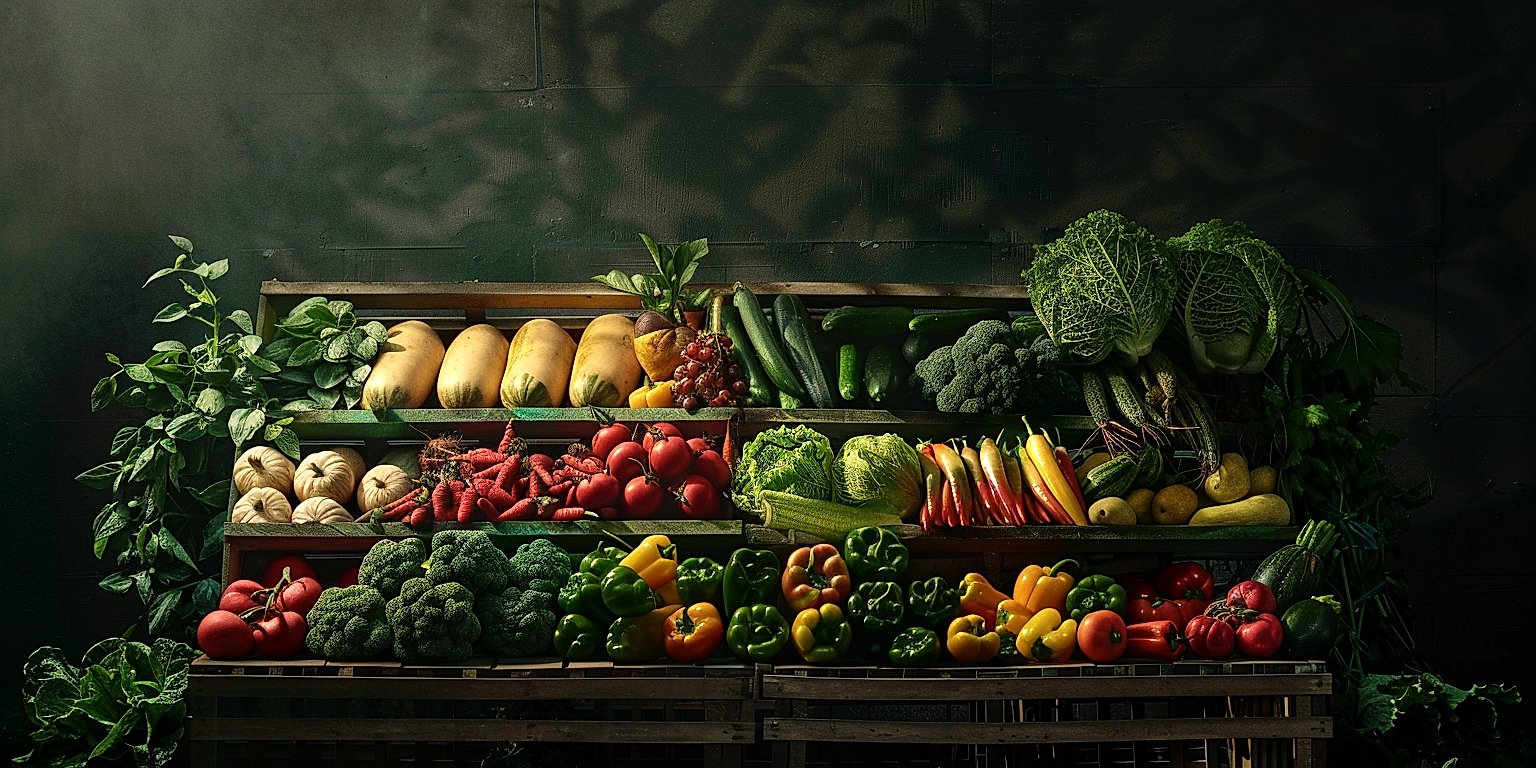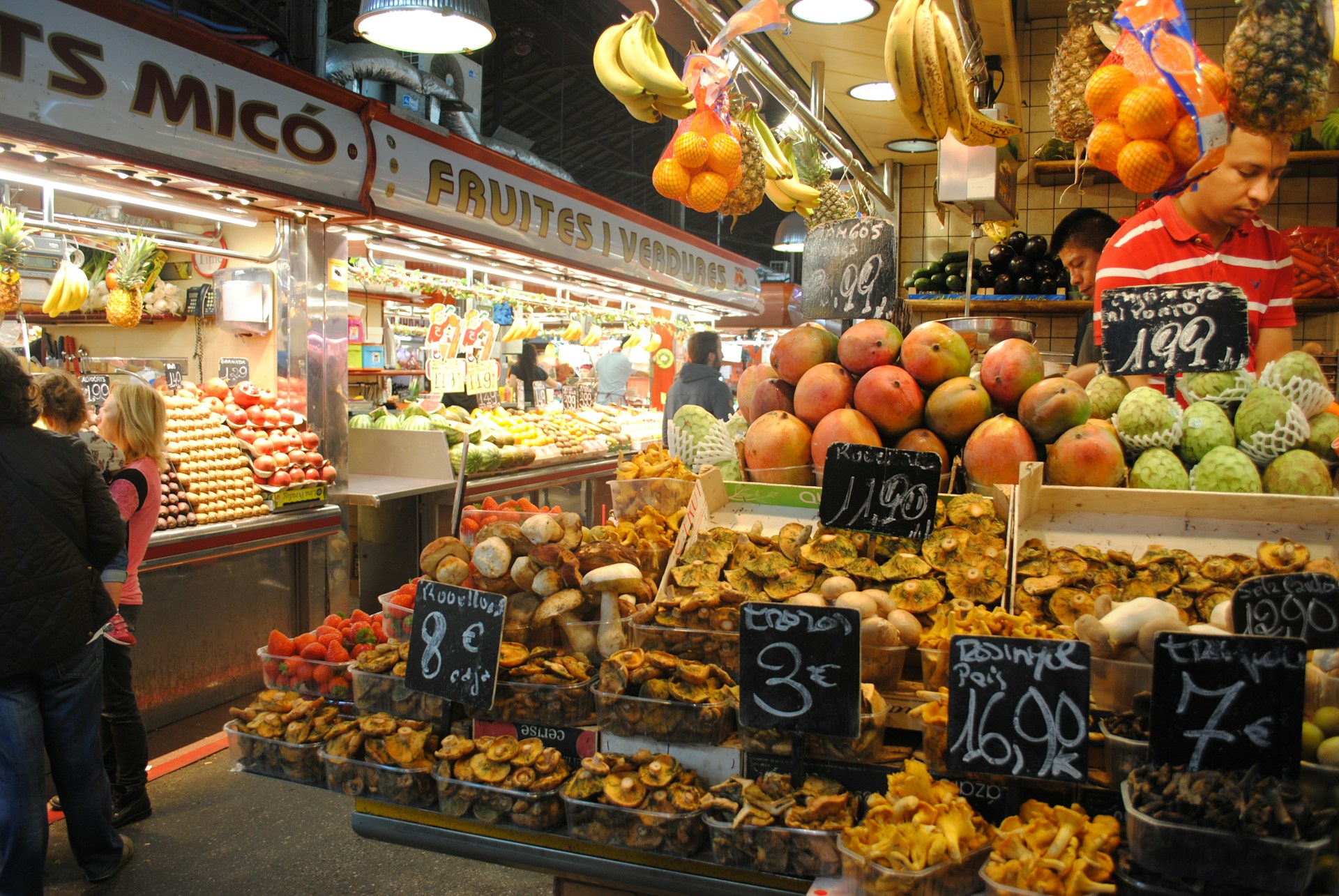In the dynamic world of digital commerce, visibility is paramount.
Produce Retailers, much like any other business striving for online growth, must prioritize their branding strategies to remain relevant and competitive.
Standing out among a sea of competitors is a nuanced task that calls for relentless dedication and strategic planning.
It is about making your business synonymous with superior quality and service.
This article aims to illuminate the myriad facets of effective online branding, all tailored to the world of produce.
Distilling years of research, this guide distills complex concepts into techniques and strategies for practical application.
Contents
Online Branding Strategies For Produce Retailers
1. Employ SEO strategies for organic web presence
Effective online branding for produce retailers requires a strong organic web presence.
For this reason, SEO strategies are of fundamental importance.
SEO, or Search Engine Optimization, refers to the techniques and practices designed to increase a website’s visibility on search engine results pages.
By effectively employing SEO strategies, produce retailers can enhance their organic visibility, which is the visibility that comes from unpaid search engine results.
The essence of SEO is to make your website more attractive to search engines.
This can be achieved by using keywords effectively, creating high-quality content, and following the best practices for web design.
Keywords are the phrases and terms that Internet users type into search engines when looking for a certain product or service.
For a produce retailer, keywords could be specific produce or general terms related to the industry.
Strategically incorporating these keywords into your web content can help signal to search engines that your website is a relevant result for those searches.
High-quality content is another critical part of SEO.
It not only makes your website more appealing to search engines but also to your visitors.
A website with interesting, informative, and accurate content can keep visitors engaged and encourage them to spend more time on your site or even make a purchase.
The key here is to create content that is valuable to your audience.
This can include producing tips, recipes, or even interesting facts about the produce you sell.
These valuable contents also increase the possibility of getting backlinks (links from other websites to yours) which is another crucial factor that search engines consider when ranking websites.
Lastly, good web design means ensuring that your website is easily navigable, has fast load speeds, and is mobile-friendly.
This should help lower your website’s bounce rate (the percentage of visitors who leave the website after viewing only one page) and increase your user engagement.
However, it’s important to remember that results from SEO strategies don’t come overnight.
It takes time to see the impact of your efforts, but once you start climbing up those search engine results pages, the benefits can be substantial.
SEO not only leads to increased visibility but also helps build brand credibility and trust because people often trust websites that appear higher in search engine results.
Additionally, it is cost-effective compared to paid search strategies.
In sum, employing SEO strategies is of great importance in enhancing the online presence of produce retailers.
This can have long-term, positive impacts on the retailer’s online image, customer reach, and ultimately, sales.
2. Utilize Social Media for Product Promotions
In the digital age, utilizing social media platforms is a highly effective strategy for promoting products and amplifying a brand’s presence online.
The diverse array of social media platforms like Facebook, Instagram, Twitter, and LinkedIn can serve as efficient channels for spreading the word about your products.
These platforms house billions of global users, providing a wide audience reach for product promotions.
Social media platforms don’t just offer standard promotional postings, but also campaigns, targeted advertisements, and influencer partnerships for an enhanced promotional strategy.
For instance, Facebook ads can specifically target demographics based on age, location, and interests, enabling promotion to a more focused audience set.
Moreover, social media influencers, with their large follower bases, can be an efficient channel for product promotions, especially in the food and produce industry.
You can leverage these influencers and request promotional posts, shoutouts, and sponsored content to effectively boost your produce promotions.
With the recent trends, Instagram shopping could also be a gamechanger for produce retailers.
This feature allows retail businesses to tag their products in posts and stories, offering a seamless shopping experience for their followers.
Another way to engage users in social media is by running interactive content like polls, questions or product quizzes to stir up excitement around your brand.
User-generated content, such as customer reviews, ratings, and testimonials can act as trust signals, thus influencing potential buyers.
Moreover, social media platforms serve as effective mediums for customer service.
Customers can directly message the brand for queries or concerns, and the prompt response helps to foster trust and loyalty.
Frequent and consistent posting on social media platforms can help maintain brand visibility, and engaging with followers helps build a robust online community for your brand.
Above all, having a realistic, relatable image on social media can evoke trust in your brand and ensure a loyal customer base.
All these factors underline the effectiveness of social media in boosting the online presence of produce retailers.
3. Implement customer loyalty programs online
It’s no secret that businesses need loyal customers to thrive and grow.
This is especially true for produce retailers, given the intense competition in this sector.
Online loyalty programs are a proven way to retain customers and achieve this goal.
They offer incentives and rewards for repeat business, pushing customers to prefer your brand over others.
Implementing these programs online can also significantly boost a retailer’s online branding efforts.
How does it work? Let’s dive deeper into this.
Customer loyalty programs can take various forms, from point-based systems to tiered rewards methodologies. Each method has its unique advantages, catering to different customer behaviors and preferences.
Digital loyalty cards, referral bonuses, and special access privileges are common examples of the incentives that these programs can offer online.
The heart of these programs is understanding your customer base.
Knowing their buying habits, preferences, and behavior will allow you to craft a program that they find valuable.
The ultimate success of an online loyalty program lies in its ability to make your customers feel valued and appreciated.
The rewards offered by an online loyalty program should not only be paced to encourage regular purchases but must also offer tangible or exclusive value to the customer.
This could mean exclusive discounts, early access to new products, or even a complimentary product on a milestone purchase.
Implementation of online customer loyalty programs should be coupled with a robust system to track each customer’s journey.
This will help in analyzing the effectiveness of the program and making necessary modifications.
Beyond retention, these programs can also attract new customers due to the perceived value and the appeal of becoming part of a community.
Moreover, these programs also offer an excellent chance to interact with your customers.
Regular updates on their points status, personalized offers, and responsiveness to their queries or complaints can foster a sense of belonging among your customers towards your brand.
In the online retail space, where building a personal touch isn’t easy, a well-implemented customer loyalty program can bridge this gap and establish a closer connection with your customers.
Gradually, this connection can be leveraged to strengthen your online branding, turning your customers into your brand ambassadors.
While the creation and implementation of an online customer loyalty program may seem daunting, the benefits in terms of customer retention and online branding are significant.
Indeed, an effectively implemented online loyalty program can be a game-changer for your online branding strategy.
4. Create Engaging and Informative Web Content
In the world of online branding, the concept of ‘Content is King’ holds more value than ever, especially for produce retailers.
The quality of your web content directly impacts your visibility online and thus your customer reach.
A dynamic and engaging content strategy is essential in establishing a strong presence online.
Engaging and informative content not only attracts customers but also keeps them coming back, leading to customer loyalty and increased sales.
Through relevant and engaging content, produce retailers can educate their customers about their products, its origin, its health benefits, and creative ways to use it.
This not only helps in showcasing your expertise in the field but also builds trust and appreciation among customers who value transparency and information.
The dynamics of creating customer engaging content also involve addressing the needs and concerns of the customer effectively.
Strive to give them beneficial tips, such as how to store your produce, when they are in season, or how to pick the freshest pieces from their local markets.
This approach will not only keep them engaged but also establish your brand as a helpful entity, thereby fostering customer loyalty.
To create informative content, it’s also crucial to stay updated about the recent trends in the produce industry and incorporate them into your content.
This can include recipes, health benefits and sustainability factors associated with various produce.
The key to remember is that your content should provide value to your customers beyond selling your product.
Keep your content fresh and regularly updated to reflect the seasonality of produce and to maintain relevance in search engine rankings.
Utilize different mediums like blogs, social media posts, videos, and newsletters to distribute your content, depending on your target audience’s preferences.
Aim for a good balance between promotional, informational, and entertaining content to cater to diverse customer interests and to keep your content strategy versatile.
5. Promote User-Generated Content on Platforms
In the digital marketing sphere, a powerful tool that can dramatically affect online branding for produce retailers is the promotion of user-generated content on various platforms.
User-generated content, often abbreviated as UGC, refers to any form of content such as videos, blogs, discussion forum posts, social media posts, or testimonials, created by unpaid contributors (i.e., users).
This type of content can significantly boost the visibility and credibility of your brand since consumers are more likely to trust content created by their peers over traditional advertising.
UGC serves as social proof to potential customers that your produce is high quality, and it can often sway purchasing decisions in your favor.
For example, a user posting an image of a dish created using your fruits and vegetables, with a caption praising your produce, is far more persuasive than any marketing copy you write.
To encourage such content, you could hold contests where customers post recipes or meals made with your produce, or ask customers to post reviews in exchange for discount codes.
One important aspect of promoting user-generated content is to always give credit to the original poster and show appreciation for their contribution.
When you engage with and value your customers in this way, it not only strengthens your relationship with them, but also encourages further interaction and UGC, creating a self-sustaining loop of organic promotion.
It’s also essential to monitor the user-generated content associated with your brand and engage with your audience, responding to comments and questions in a timely, personable manner.
The right kind of UGC can boost the effectiveness of your SEO strategies since unique, organic content is favored by search engine algorithms.
User-generated content provides an authentic and compelling way to tell your brand’s story and to show potential customers what existing customers love about your brand.
It gives your audience a voice and platform to share their experiences, which builds brand loyalty and develops a community around your brand.
By promoting user-generated content, produce retailers can leverage their customers’ satisfaction and creativity to form a stronger, more organic online presence.
This strategy supports all elements of online branding — from visibility and credibility, to search engine optimization and customer relationships — ultimately driving better engagement and results.
Remember, for this approach to truly succeed, it’s crucial to actively engage with your audience and make them feel valued and heard as part of your online community.
The Bottom Line
Through these methods, businesses can both enhance their online presence and strengthen their relationships with customers.
Utilizing SEO strategies can significantly increase the probability of potential customers finding a business organically.
Moreover, the power of social media in promoting products can never be overemphasized.
By implementing online customer loyalty programs, businesses can encourage repeat purchases and increase customer retention rates.
Moreover, engaging and informative web content can catch and hold the attention of site visitors, converting them into potential customers.
Lastly, promoting user-generated content can provide a more genuine and relatable impression of the products or services, winning the trust of potential customers.




